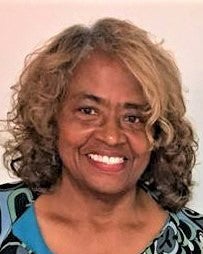A town known by many names
Published 2:39 pm Monday, August 7, 2023
|
Getting your Trinity Audio player ready...
|
Working with the Washington Waterfront Underground Railroad Museum has provided me with some of the most unique experiences I have ever had. I’ve had the privilege over the last five years of meeting people from all walks of life coming from many different places. As of today, the museum has hosted visitors from all fifty states and forty-seven countries abroad. I am honored to have met so many people and I am even more honored to have them share stories of their ancestors and histories with me. We have hosted renown history scholars, researchers, history lovers, lecturers, authors, college and school students, as well as century-old people who have powerful stories of freedom seeking ancestors with documents, to validate their accounts of freedom seeking in Washington and Beaufort County. Just last weekend, PBS North Carolina producers came to the museum to film part of a documentary about North Carolina’s underground railroad.
One of the most intriguing accounts came from a visitor whose ancestors referred to Washington as ‘a town of grace.’ I had heard that term used before in Philadelphia when I taught at a Quaker school. People talked about the small towns on the Pamlico-Tar River, as towns of grace but at the time I heard it I didn’t know what it actually meant. She told me Washington received the name because of the networks to the underground railroad that ran through it. The underground railroad was simply a network of abolitionist movement, that was comprised of people of all colors, who worked together to help an enslaved people gain their freedom.
As Washington was the second largest port after Wilmington at one time, and by 1850, the largest shipbuilding town in North Carolina, the Pamlico-Tar River was well known then as a ‘freedom road’, an ‘alley of freedom’, and the town was called as a town of grace.
Towns of grace were those small cities and towns along or close to rivers like Wilmington, New Bern, Edenton to name a few that would lead to the Atlantic Ocean. There were also many locations in Washington and Beaufort County that provided refuge for freedom seekers.
Washington NC, before 1776, was called ‘Forks of the Tar’ but it was also called ‘Pea Town’ because it was established in an area that was jokingly called a ‘pea patch’ according to the book ‘Washington on the Pamlico’ by Worthy and Loy.
But did you know Washington was also called ‘Potato Hole’ by enslaved people? A potato hole was a hole dug in the earthen floor of enslaved people’s cabins, where a large deep opening was covered by boards and was mainly used to store potatoes, rutabagas and other root vegetables during the winter. The potato hole was also used by slaves to hide personal possessions such a few coins, a baby’s first tooth, a lock of hair, a garment from a family member who was slated to be sold, or other precious personal items from their slave owners. Enslaved people hiding out trying to seek freedom on the ships that left the port of Washington called Washington a ‘potato hole’ because they could be often hid there by ‘rescue squads’ also known as vigilance committees’ and abolitionists who were helping freedom seekers. Or, they could gain valuable information about escape routes to safe areas nearby.
Washington’s Keysville community, where free African Americans lived was a refuge for freedom seekers until they could move on or possibly settle on the land. The over 150 acres in Keysville was purchased in 1836 by Southby Keys, a free African American man who brought the land from William A. Orrell. The rural landscape with caves and deep ditches provided cover for freedom seekers.
The town of Aurora with its over 500 acres was owned by a free African American couple, Isaiah and Betty Hodge and was a refuge. The Hodges named the land Betty Town and the name remained Betty Town until the land was taken by deceit around 1859 and renamed Aurora.
The accounts of how enslaved people gained their freedom is the heartbeat of the museum alongside the narratives of so many people here who made the underground railroad successful and gave Washington NC a place of prominence in America’s underground railroad history.
Leesa Jones is a Washington native and the co-curator of the Washington Waterfront Underground Railroad Museum.





